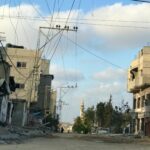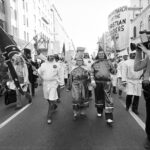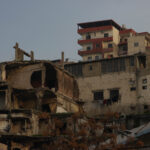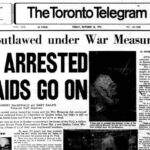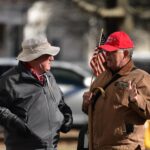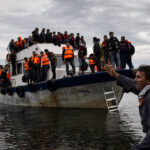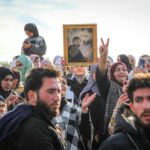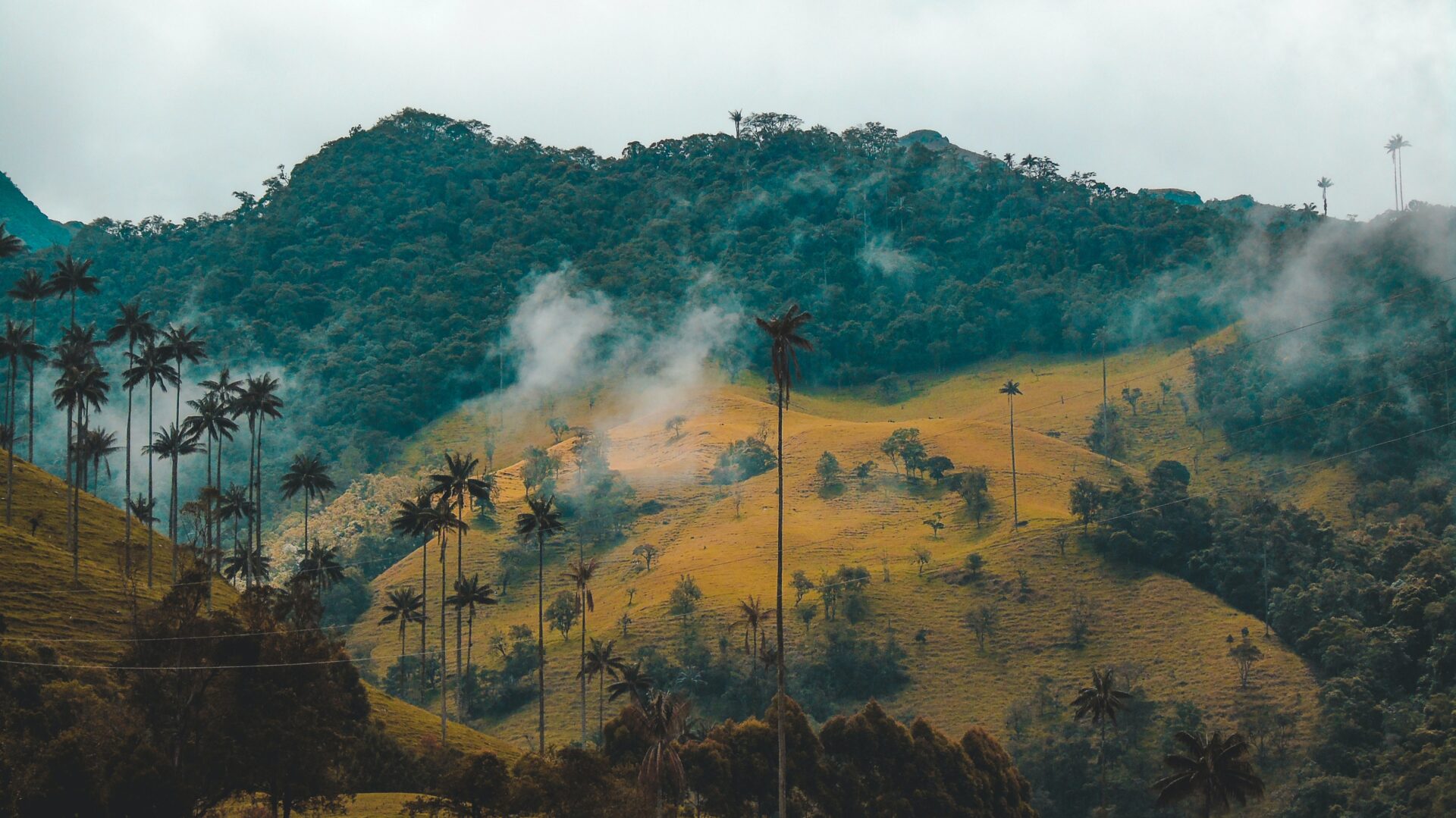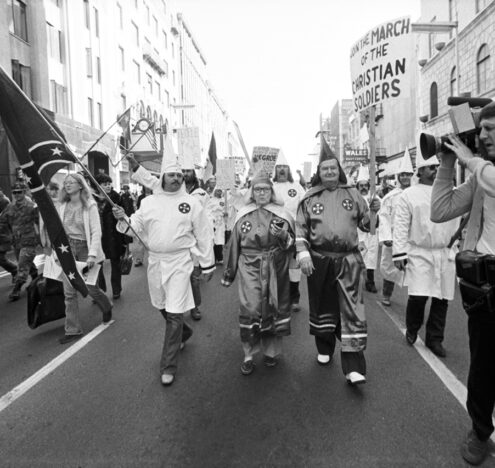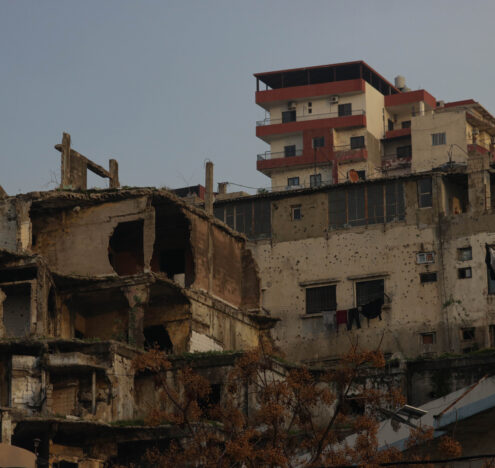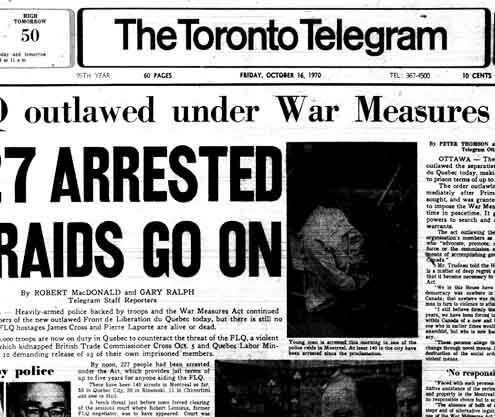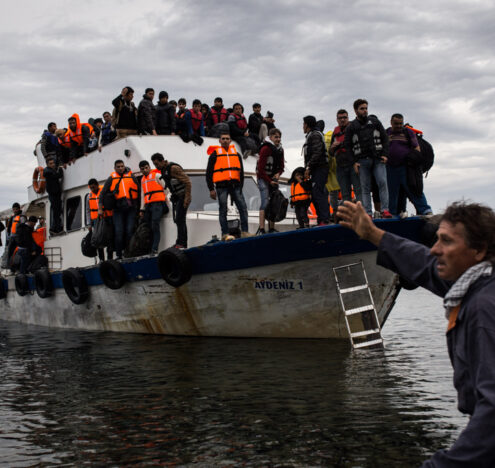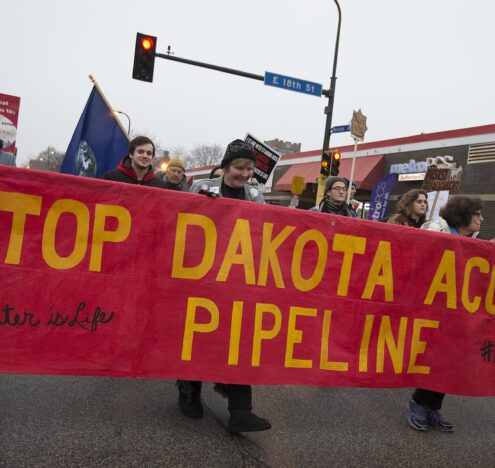In a packed auditorium at the Cinematheque in the city center of Colombia’s capital city, Bogotá, hundreds gathered for a discussion about peace initiatives in Colombia. Andrés Mauricio Zuluaga Rivera, known under his artistic name, Martín Batalla, was one of the panelists. A 38-year-old former guerilla fighter from a mountainous coffee-growing region in Western Colombia, he laid down arms alongside almost 14,000 other members of the Revolutionary Armed Forces of Colombia (FARC) after their leaders signed a peace deal with the Colombian government in 2016. Batalla now lives and breathes peace and reconciliation in his country. He is co-founder of Confecciones La Montaña, a social business formed by 24 former guerilla fighters who produce and sell bags, clothes, honey, and other products. But Batalla is worried about peace in Colombia: “There cannot be peace when our brothers are killed,” he said at the event, sitting next to the moderator, Colombia’s former president and peace Nobel laureate, Juan Manuel Santos.
Colombia’s five-decade-long conflict cost at least 450,000 lives and displaced about eight million people, according to a 2022 report the Colombian Truth Commission presented to the UN. A 2016 peace agreement between the government and the country’s then-largest guerilla group, the FARC, ended an era of civil conflict. But violence continues to rage, and the death of the FARC gave birth to a number of new criminal groups that extort, kidnap, and kill. Colombia has the second highest number of criminal organizations in the world, following only the Democratic Republic of Congo. Now, former FARC guerilla fighters have become victims too.
As peace negotiations advance under Colombia’s first avowedly leftist president, Gustavo Petro, himself a former member of the 19th of April Movement (M-19) — a demobilized urban guerilla movement — many former guerilla fighters are left behind. Threats are mounting and as many as 400 peace signatories have been killed. The lives of those who have chosen peace are at stake, and experts warn that members of armed groups that are currently negotiating with the government may question whether it’s really possible to integrate into Colombian society and live a safe life if they choose to lay down their arms. “Why demobilize when they’re killing the ones who sign peace?” says Gimena Sánchez-Garzoli, director for the Andes region at the Washington Office on Latin America, a Washington-based research and advocacy organization advancing human rights in the Americas.
Without guaranteeing the safety of peace signatories, Petro’s “total peace” ambitions will crumble, Batalla argues.
Dangerous Safe Havens
When the FARC demobilized in 2016, many former fighters moved into “territorial spaces for training and reincorporation,” known under their Spanish acronym as ETCRs, which are camps where demobilized militants engage in alternative sustainable development projects, learn new skills and prepare to return to civilian life. But now former combatants are being threatened in their homes in these havens for transformation and demobilization. “Initially, these places were safe, but they no longer are,” Sánchez-Garzoli says.
Between April and May this year, about 400 families left their homes in two such reincorporation camps — ETCR Georgina Ortiz in the municipality Vista Hermosa and ETCR Mariana Paéz in the municipality Mesetas, both located in the Meta department about 6 hours south of Bogotá. They were threatened by Estado Mayor Central, a dissident group of the FARC whose leaders did not sign the 2016 peace agreement.
Where the ETCR Mariana Paéz is located, peace signatories had symbolically gathered to lay down their weapons on June 27, 2017. But despite the camp’s historic importance for peace and reconciliation, its inhabitants could no longer live peacefully. On March 24, 2023, Estado Mayor Central retracted their threats against peace signatories in ETCR Mariana Paéz, saying they wanted to reciprocate the government’s peace negotiation efforts. But many inhabitants had already left and did not dare to return.
In ETCR Georgina Ortiz, the Estado Mayor Central killed three peace signatories and threatened several others. It’s still unclear whether these families will be able to return to their homes.
The reincorporation camps were originally created to provide safe spaces for ex-combatants to demobilize and begin their process of reintegration into civilian life. Instead, the peace signatories and their families living there received death threats.
Such threats, displacements, and killings are part of a larger tendency in post-conflict Colombia. Batalla is worried about the situation. He knows that these are not just numbers, they’re his friends and former colleagues. Last year, Robín Muñoz Taborda, who worked alongside Batalla in Confecciones La Montaña and similarly joined the peace agreement, was brutally killed. Every time a fellow peace signatory is killed, it hurts Batalla profoundly.
As a former student leader, Batalla was wrongfully imprisoned for 16 months — with the Colombian state subsequently condemned for the arbitrary capture of him and other students. It was inside the prison that Batalla got to know members of the guerilla movement who introduced him to their way of life and cause. When he was released —with his new acquaintances and angry at the state for the injustices that he had suffered — he joined the ranks of the FARC where he worked for the following 9 years until the demobilization of the group in 2016. Now, he’s a firm believer in peace, but he’s disappointed that the Colombian state has not kept its promises to protect him and other peace signatories.
“Total Peace”
President Petro was elected on a promise to bring “total peace” to the country. But he experienced a series of setbacks, while he was also battling other personal and political scandals, including the recent arrest of his son amidst charges of money laundering and illicit enrichment. Nonetheless, on Aug. 3, his government entered into an ambitious six-month ceasefire with the country’s largest remaining armed rebel group, the National Liberation Army, known under its Spanish acronym as the ELN.
The truce has been criticized for focusing narrowly on bilateral peace between the Colombian government and the armed group while leaving civilians — including the peace signatories — behind. The agreement does not explicitly prohibit kidnappings, recruitment of minors, and extortions — actions that continue to terrorize local citizens. And it doesn’t apply to infighting between armed groups, which is currently the deadlier part of the conflict.
It’s no easy task to protect civilians from the terror of Colombia’s armed and criminal groups. Since 2016, new groups have emerged to fill the gaps left by a demobilized FARC. They threaten the peace signatories and their families. “There is a multiplicity of factors and actors. The threats come from all sides,” Batalla sighs. Part of the problem is that the state isn’t present everywhere in the county, says Mariano Aguirre, Associate Fellow at Chatham House and former senior advisor on peacebuilding at the Office of the Resident Coordinator of the United Nations in Colombia.
There’s also a bureaucratic inertia in the government, including its security forces, which tend to react slowly and ineffectively to protect the peace signatories, Aguirre explains. The former rebels are also often stigmatized. “They’re particularly vulnerable, because Colombia’s history shows that when a group demobilizes, society generally doesn’t care about their safety,” Sánchez–Garzoli says.
Batalla and other peace signatories believe the total peace strategy should be linked much more closely to the implementation of the 2016 peace agreement signed in Havana, Cuba, which had specific protections for individual fighters who relinquished their weapons. The agreement also promised a comprehensive rural reform to address Colombia’s unequal and informal landholding and to improve the small-farmer economy. But land distribution in Colombia is still amongst the most unequal in the world, and rural poverty is more than double as high as urban poverty. “This [violence and conflict] is all very linked to inequality,” Aguirre says.
“Without the implementation of the Havana agreement, there is no total peace,” Batalla says.
The government’s delayed security policy hasn’t helped either. On April 25, the Ministry of Defense presented its “Security, Defense, and Citizen Coexistence Policy.” Sánchez-Garzoli says the intentions behind this policy are good, but it came too late. “It left a void and a feeling that there was no response and illegal groups could do whatever they wanted,” she said. She says it’s questionable whether Petro’s inexperienced government, which has limited support in Congress, will really be able to implement it.
Other defenders of peace in Colombia feel threatened too. They’re entangled in Colombia’s complex security panorama. Last year, Colombia became known as the deadliest country in the world for human rights defenders, accounting for 183 deaths — 46% of the registered killings of human rights activists worldwide.
What’s Next
Experts warn that the lack of security for the former FARC guerilla fighters who chose peace over arms could also impact current negotiations. Sánchez-Garzoli says the ELN won’t want to end up in a situation similar to that of the former FARC rebels, who are now threatened with their lives. “If the government doesn’t provide them [FARC peace signatories] with protection, they may join new armed groups to get that protection,” Sánchez-Garzoli says. Can members of Colombia’s armed groups trust the government’s ability to protect them if they agree to peace? Will a safe reconciliation be possible?
I talked to Monsignor Héctor Fabio Henao who serves as a delegate of the Colombian Bishops’ Conference for relations between the Catholic Church and the Colombian government. He was sitting in Caracas, the capital city of Venezuela, where he was taking part in the fourth round of peace negotiations between the Colombian government and the ELN.
He explained that this is a special negotiation set-up. Before, negotiations were conducted between the government, the armed group, and the guarantor counties. Now, permanent companions have been added – the UN and the Catholic Church, which Monsignor Henao represents. He hopes to ensure a humanitarian focus in the talks, which would include dealing with displaced civilians.
Monsignor Henao is optimistic about the outlook for peace in Colombia. “I’m hopeful…with very few cycles, we have achieved very substantial agreements already,” he said.
But like Batalla, he is also worried about the implementation of the 2016 agreement, particularly about the failure to protect peace signatories. “We have a very worrying analysis of what is happening with the signatories,” he continued. “It is a critical issue that really requires focus from the Colombian state, it requires support from the international community.”
Sánchez-Garzoli also points towards the international community. She says the US should support the peace process in Colombia better. “The United States has given this zero attention, zero interest. They’re even afraid to touch these issues,” she explains. She says there’s still a lot of resistance in the United States, particularly amongst the right and the Cuban Americans, to recognize the FARC as a legitimate political actor. “We need to make these issues more visible in the public…The Europeans could help with that too,” she argues.
Batalla compliments Petro’s focus on achieving peace, but he is skeptical about his strategy. He says Petro must implement the 2016 Havana peace agreement — and particularly the part about protecting peace signatories — to ensure a lasting peace, but in the meantime, he said, “we’re not going to be sitting with our hands crossed, waiting.”


